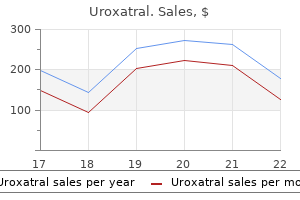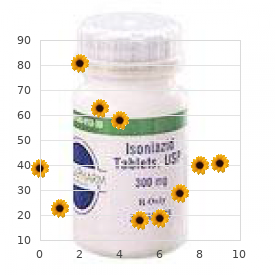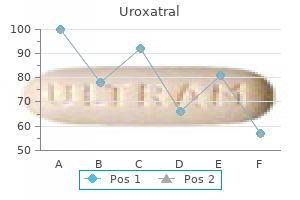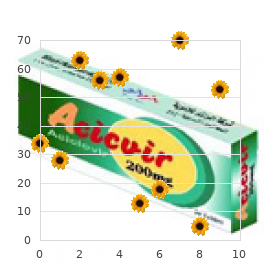
Uroxatral
| Contato
Página Inicial

"Discount uroxatral 10 mg mastercard, prostate cancer 2".
W. Ugrasal, M.A.S., M.D.
Deputy Director, Columbia University Roy and Diana Vagelos College of Physicians and Surgeons
The significance of serum creatine phosphokinase stage in the early analysis and microbiological evaluation of necrotizing fasciitis prostate 9 complex reviews 10 mg uroxatral purchase free shipping. Chromobacterium violaceum necrotizing fasciitis: A case report and evaluate of the literature prostate urologist discount 10 mg uroxatral overnight delivery. Fulminant necrotizing fasciitis prostate cancer and sexual health uroxatral 10 mg buy visa, caused by Serratia marcescens in an immunosuppressed host prostate health complex 10 mg uroxatral amex. Favorable consequence of amphotericin B remedy of zygomycotic necrotizing fascitis (sic) caused by Apophysomyces elegans. Necrotizing pyoderma gangrenosum: An uncommon differential analysis of necrotizing fasciitis. Necrotizing Sweet syndrome: A new variant of neutrophilic dermatosis mimicking necrotizing fasciitis. Periodic acid-Schiff-positive organisms in primary cutaneous Bacillus cereus an infection. Evidence for a role of native trauma within the pathogenesis of erosive pustular dermatosis of the scalp. Erosive pustular dermatosis of the scalp successfully treated with oral zinc sulphate. Chronic atrophic erosive dermatosis of the scalp and extremities: A recharacterization of erosive pustular dermatosis. Erosive pustular dermatosis of the scalp following cryotherapy and topical tretinoin for actinic keratoses. Erosive pustular dermatosis of the scalp following radiation remedy for solar keratoses. Erosive pustular dermatosis of the scalp after gefitinib and radiotherapy for mind metastases secondary to lung most cancers. Successful treatment of erosive pustular dermatosis of the scalp with topical tacrolimus. Erosive pustular dermatosis of the scalp efficiently handled with calcipotriol cream. Erosive pustular dermatosis of the scalp: A successful remedy with photodynamic therapy. Aminolevulinic acid photodynamic therapy in the treatment of erosive pustular dermatosis of the scalp. Atypical erosive pustular dermatosis of the scalp with eosinophilia and erythroderma. Erosive pustular dermatosis and related alopecia efficiently treated with topical tacrolimus. Blastomycosis-like pyoderma brought on by Pseudomonas aeruginosa: Report of a case responsive to ciprofloxacin. Blastomycosis-like pyoderma (pyoderma vegetans) responding to antibiotics and topical disodium chromoglycate. A case of blastomycosis-like pyoderma brought on by combined infection of Staphylococcus epidermidis and Trichophyton rubrum. Localized blastomycosis-like pyoderma with good response to cotrimoxazol and cryotherapy. Coexistent erythrasma, trichomycosis axillaris, and pitted keratolysis: An missed corynebacterial triad A corynebacterial triad: Prevalence of erythrasma and trichomycosis axillaris in soldiers with pitted keratolysis. A papular eruption secondary to an infection with Corynebacterium jeikeium, with histopathological options mimicking botryomycosis. Imported laryngeal and cutaneous diphtheria in vacationers coming back from western Africa to Sweden, March 2012. Cases of cutaneous diphtheria in New Zealand: Implications for surveillance and management. Two cases of cutaneous diphtheria associated with occupational pig contact in Germany. Cutaneous diphtheria within the city poor inhabitants of Vancouver, British Columbia, Canada: A 10-year evaluation. Electron microscopy, histochemistry, and microbiology of bacterial adhesion in trichomycosis axillaris. Trichomycosis (trichobacteriosis): Clinical and microbiological experience with fifty six cases. Trichomycosis capitis: First report of this localization and ultrastructural elements. Hair destroying growth of Corynebacterium tenuis within the so-called trichomycosis axillaris. Isolation of Dermatophilus congolensis from two New Zealand circumstances of pitted keratolysis. Keratolysis sulcata (pitted keratolysis): Clinical signs with completely different histological correlates. Value of a novel Neisseria menigitidis-specific polymerase chain response assay in pores and skin biopsy specimens as a diagnostic device in continual meningococcemia. Mycoplasma genitalium: the aetiological agent of urethritis and other sexually transmitted diseases. The Neisseria gonorrhoeae inhabitants in Sweden throughout 2005 � Phenotypes, genotypes and antibiotic resistance. Tumour-like ear lesion because of Mycobacterium tuberculosis diagnosed by polymerase chain reaction-reverse hybridization. Molecular detection of Mycobacterium tuberculosis in tissues showing granulomatous inflammation with out demonstrable acid-fast bacilli. Cutaneous tuberculosis analysis in an inhospital Amazonian region by means of telemedicine and molecular biology. Polymerase chain response primarily based detection of Mycobacterium tuberculosis in tissues exhibiting granulomatous irritation with out demonstrable acid-fast bacilli. Polymerase chain reaction in cutaneous tuberculosis: Is it a dependable diagnostic technique in paraffin-embedded tissues Fatal disseminated bacillus Calmette�Gu�rin infection and arrested development of cutaneous malignant melanoma following intralesional immunotherapy. Secondary tuberculosis of the skin: Clinical features and problems in laboratory prognosis. An appraisal of epidemiologic, clinical, bacteriologic, histopathologic, and immunologic parameters in cutaneous tuberculosis. A national audit of the laboratory prognosis of tuberculosis and other mycobacterial ailments inside the United Kingdom. Multiple metastatic tuberculosis abscesses in a, affected person with Pott disease and lung tuberculosis: A case report. Acute pustular eruption: An unusual medical, characteristic of disseminated mycobacterial infection in patients with acquired immunodeficiency syndrome. Genetic predisposition to clinical tuberculosis: Bridging the gap between easy and complex inheritance. Suggested guidelines for screening and management of tuberculosis in sufferers taking oral glucocorticoids � An essential but usually uncared for concern. Characteristics of mycobacterial an infection in patients with immunodeficiency and nuclear factor-B important modulator mutation, with or without ectodermal dysplasia. Genetic susceptibility to different clinical forms of tuberculosis within the Peruvian inhabitants. Cutaneous mycobacteriosis: Analysis of 34 cases with a model new classification of the disease. Diagnosis of cutaneous tuberculosis by polymerase chain reaction utilizing a species-specific gene. Disseminated cutaneous Bacille Calmette� Gu�rin an infection recognized by polymerase chain response in a patient with X-linked extreme mixed immunodefiency. The significance of histopathologic patterns in optimistic tuberculin pores and skin test site. Clinical and epidemiological observations of cutaneous tuberculosis in Larkana, Pakistan. Pulmonary tuberculosis and cutaneous, mycobacterial infection in a patient with incontinentia pigmenti.

Diseases
- Premature atherosclerosis photomyoclonic epilepsy
- Angioma
- Metaphyseal dysostosis mental retardation conductive deafness
- Luteinizing hormone releasing hormone, deficiency of with ataxia
- Melnick Needles syndrome
- Amelia facial dysmorphism
- Pseudoxanthoma elasticum, recessive form

Specific examples of arthropodrelated ailments include mosquito-borne illnesses similar to malaria man health problems uroxatral 10 mg buy, dengue prostate cancer treatable discount uroxatral 10 mg amex, and viral encephalitides; fly-borne illnesses similar to leishmaniasis prostate cancer quality indicators discount 10 mg uroxatral fast delivery, bartonellosis mens health 60 years old order uroxatral 10 mg line, and sleeping sickness; and tick-associated ailments such as Rocky Mountain noticed fever, Lyme illness, and tick paralysis. These include erythema, urticaria, and purpura within the case of millipedes and centipedes. Mention should also be manufactured from the comprehensive monograph on arthropods and the skin by Alexander7 and the review on venomous arthropods by Vetter and Visscher. Erythema, purpura, bullae, necrosis, ulcers, lymphadenitis, and systemic symptoms may develop. More than ninety species of ticks, each hard- and soft-bodied varieties, have been identified in Australia. Amblyomma americanum, the lone star tick, is the most typical species of this genus found within the United States. Mouthparts comprise a thick hyaline structure representing the chitinous wall of the hypostome; this construction contains barb-like projections that act as an anchor during feeding. A reaction resembling erythema elevatum diutinum (also interpreted as localized continual fibrosing vasculitis) followed a tick chunk in one particular person. Cutaneous lymphoid hyperplasia, both of the T-cell or the B-cell kind, might develop. Erythema chronicum migrans (Lyme disease), which follows the bite of Ixodes, has been proven to be attributable to a spirochete transmitted by the tick. Dermoscopy can be useful both in diagnosing tick bites and in figuring out the species of the tick. Histopathology, nonetheless, showed characteristic options of Demodex folliculitis and lacked the keratinocyte apoptosis and satellite tv for pc cell necrosis of graft-versus-host disease or the epidermal dysmaturation and interface adjustments related to chemotherapy reactions. It is acquired notably under circumstances of overcrowding and poor private hygiene or during sexual contact. A new cycle most likely commenced in 1993, although there are conflicting reports on the date of graduation of this most recent cycle. Epiluminescence microscopy enhances the diagnosis of scabies; it gives a low number of false-negative results. The sites mostly affected are the interdigital skin folds, the palmar surfaces of the hands and fingers, the wrists, the nipples, the inframammary areas, and the male genitals. Mites are not often discovered, and this type (persistent nodular scabies) is assumed to characterize a delayed hypersensitivity reaction much like that discovered following some other arthropod bites. Norwegian (crusted) scabies is a rare contagious type consisting of widespread crusted and secondarily infected hyperkeratotic lesions, discovered in the mentally and bodily debilitated,146�148 as well as in immunosuppressed sufferers. Longitudinal nail splitting has been reported as a consequence of crusted scabies. The standard antiscabetics have poor compliance; nonetheless, ivermectin, an oral scabicide, is proving a helpful substitute. Elevated levels of IgE have been discovered within the serum of some sufferers with scabies, but the serum IgA is lowered in many with the Norwegian kind. The dermis accommodates a superficial and deep infiltrate of continual inflammatory cells and normally some interstitial eosinophils. The eggs with creating mites and fecal material may be identified within burrows utilizing reflectance confocal microscopy,195 and lately, a larva transferring freely within the skin was identified with this method. A spongiotic vesicle with underlying eosinophil-rich dermal infiltrate may be proof of response to another type of arthropod. Foci of floor necrosis, tick mouthparts, or small vessel thrombi within the dermis are clues to the diagnosis of tick-bite response. As famous previously, lesions resembling bullous pemphigoid, both clinically and microscopically, have been reported in patients with scabies. In a number of instances, direct immunofluorescence examine has additionally shown linear or granular immunoglobulin deposits alongside the basement membrane zone, suggesting that mites may injure the basement membrane zone immediately or possess antigens that cross-react with those of the basement membrane zone. Hyperplasia of Langerhans cells is now a recognized discovering in lesions of sufferers with scabies and must also be useful in recognizing elements of organisms and their merchandise; thus, the spines of mites have a central dark core and peripheral birefringence, whereas fecal matter (scybala) reveals stippled peripheral birefringence. The 774 Section6 � Infectionsandinfestations mechanisms are thought to play a role in the pathogenesis of the eruption. There is a superficial and mid-dermal predominantly perivascular infiltrate composed of lymphocytes, macrophages, and a few eosinophils. There are normally some interstitial eosinophils, suggesting an arthropod chunk; however, the response is extra superficial and less inflammatory than the usual arthropod reaction. Vesiculobullous lesions appear to outcome from each intraepidermal and subepidermal vesiculation, although the histology of this rare form typically goes unreported. Acute superficial lymphangitis with axillary adenopathy has occurred following the chew of the pigeon mite, Argas refluxus. There is often epidermal spongiosis, dermal edema with some neutrophils, and later a extra combined dermal inflammatory infiltrate, as in different arthropod lesions. There are erythematous papules and papulovesicles, typically grouped, with a predilection for the chest, abdomen, and proximal extremities. It is an growing problem in many urban communities,116 with outbreaks particularly in faculties,225�230 although the incidence is declining in some communities. Both the pubic louse and the top louse cement their eggs to hair, forming the minute gritty projection that is called a nit. Multiple bluish spots (maculae ceruleae) may be found, particularly on the trunk, in individuals infested with the pubic louse. Scanning electron microscopy of the egg of the pubic louse has discovered that the egg is totally encased by a proteinaceous sheath, except for the operculum, by way of which oxygen trade occurs. It then works its means out of the skin and falls to the ground, where pupation happens. Surrounding it is a heavy mixed inflammatory cell infiltrate that includes lymphocytes, histiocytes, occasional international physique big cells and plasma cells, in addition to eosinophils; neutrophils are also current close to the cavity. It is encased by a thick chitinous cuticle with widely spaced spines on the floor. Once the ova have been shed via a gap in the pores and skin and the tunga has died, the nodule often turns into frankly ulcerated. Larval parts are present within a subcutaneous cavity, the wall of which contains a heavy inflammatory cell infiltrate. Mosquitoes could trigger urticarial and even bullous lesions in occasional sensitized hosts. They may cause a life-threatening dysfunction in sufferers with Epstein�Barr virus infection (see later). Beetles (order Coleoptera) can produce slowly forming blisters, necrotizing lesions, or papular urticaria. The setae, which include an urticating toxin (thaumetopoein), may be airborne, producing disease in unsuspecting hosts. Lesions of papular urticaria present outstanding papillary dermal edema and a superficial and deep inflammatory infiltrate, with perivascular accentuation and normally some interstitial eosinophils. Some neutrophils are sometimes present in lesions biopsied in the first day or so, notably with certain insects. Flea bites normally have some neutrophils in the exudate, as do the necrotizing lesions produced by beetles. Plasma cells may be distinguished, notably in the deep dermis, in some persistent insect bites; rarely, the appearances might simulate a plasmacytoma. Note that the cnidarians (coelenterates) can produce lesions that mimic both clinically and histologically those produced by arthropods (see p. It has been suggested that the term eosinophilic dermatosis of myeloproliferative illness is more acceptable. There is a superficial and deep perivascular and interstitial infiltrate of lymphocytes and eosinophils of variable density. Insect bite-like reactions have additionally occurred, either concurrently or sequentially, in association with eosinophilic panniculitis (in a patient with continual lymphocytic leukemia)384 and with eosinophilic cellulitis (in a patient with diffuse giant B-cell lymphoma). There is pronounced pseudoepitheliomatous hyperplasia, an unusual sample of response. Morbidity of brown recluse spider bites: Clinical image, treatment and prognosis. Epidemiological and clinical manifestations of, sufferers hospitalized with brown recluse spider chew. Ulceration of the arm attributed to a spider bite and treated with intravenous hydrogen peroxide: A cautionary story. Diagnosis of loxoscelism in a toddler confirmed with an enzyme-linked immunosorbent assay and noninvasive tissue sampling.

Diseases
- Fetal hydantoin syndrome
- Cataract microcornea syndrome
- Hypogonadism retinitis pigmentosa
- Juvenile gout
- Axial osteosclerosis
- Hydrocephalus
- Exencephaly
- Cinchonism

Prevalence of melanoma clinically resembling seborrheic keratosis: Analysis of 9204 instances prostate mri radiology uroxatral 10 mg generic with visa. Evaluation of prospectively collected presenting signs/symptoms of biopsy-proven melanoma prostate cancer 3rd stage uroxatral 10 mg cheap without prescription, basal cell carcinoma mens health 007 workout uroxatral 10 mg discount otc, squamous cell carcinoma prostate oncology questions discount uroxatral 10 mg online, and seborrhoeic keratosis in an elderly male inhabitants. Following lentigo maligna could not prevent the development of life-threatening melanoma. Amelanotic lentigo maligna melanoma: Diagnostic conundrum � Presentation of 4 new circumstances. Amelanotic lentigo maligna melanoma of the face: A case report and evaluation of the literature. From melanotic to amelanotic lentigo maligna: An aggressive, variant presenting as an inflammatory lesion. Rapid development of lentigo maligna to deeply invasive lentigo maligna melanoma: Report of two instances. Successful therapy of malignant melanoma in situ with topical 5% imiquimod cream. Imiquimod remedy of lentigo maligna: An open-label examine of 34 main lesions in 32 patients. Topical imiquimod therapy of lentigo maligna: Clinical and histologic analysis. Treatment of lentigo maligna (melanoma in situ) with the immune response modifier imiquimod. Characterization of the mobile, infiltrate throughout successful topical remedy of lentigo maligna with imiquimod. Cryosurgery throughout topical imiquimod: A profitable mixture modality for lentigo maligna. A retrospective examine of one hundred fifty patients with lentigo maligna and lentigo maligna melanoma and the efficacy of radiotherapy using Grenz or gentle X-rays. Surgical margins for lentigo maligna and lentigo maligna melanoma: the technique of mapped serial excision. Patterns of native horizontal unfold of melanomas: Consequences for surgery and histopathologic investigation. Treatment of lentigo maligna with complete circumferential margin management utilizing vertical and horizontal permanent sections: A retrospective study. Histologic evaluation of lentigo maligna with everlasting sections: Implications concerning present pointers. Management of lentigo maligna and lentigo maligna melanoma with paraffin-embedded tangential sections: Utility of immunoperoxidase staining and supplemental vertical sections. Fractionated radiotherapy of lenitgo maligna and lentigo maligna melanoma in 64 sufferers. Multimodal in vivo optical imaging, together with confocal microscopy, facilitates presurgical margin mapping for clinically complex lentigo maligna melanoma. Use of digital epiluminescence microscopy to help define the edge of lentigo maligna. Management of lentigo maligna and lentigo maligna melanoma with staged excision: A 5-year follow-up. Staged excision for lentigo maligna and lentigo maligna melanoma: A retrospective analysis of 117 instances. Local recurrence in melanoma in situ: Influence of intercourse, age, site of involvement and therapeutic modalities. Risk components for lentigo maligna melanoma in contrast with superficial spreading melanoma: A case�control research in Australia. Superficial spreading and nodular melanoma are distinct biological entities: A challenge to the linear development model. Plantar lentiginous melanoma: A distinctive variant of human cutaneous malignant melanoma. Melanomas of volar and subungual pores and skin in Puerto Ricans: A clinicopathologic study. Malignant melanoma in situ on the only real of the foot: Its medical and histopathologic traits. Epidemiology and prognosis of plantar melanoma in sixty two Japanese patients over a 28-year interval. Clinicopathological options and prognostic factors of cutaneous melanoma amongst Hong Kong Chinese. Early malignant melanoma manifested as longitudinal melanonychia: Subungual melanoma might arise from suprabasal melanocytes. Acral cutaneous melanoma in Caucasians: Clinical options, histopathology and prognosis in 112 patients. Subungual melanoma: A research of 124 circumstances highlighting options of early lesions, potential pitfalls in prognosis, and guidelines for histologic reporting. Childhood subungual melanoma in situ in diffuse nail melanosis starting as increasing longitudinal melanonychia. Presentation, histopathologic findings, and medical outcomes in 7 circumstances of melanoma in situ of the nail unit. Specific dermoscopy patterns and amplifications of the cyclin D1 gene to outline histopathologically unrecognizable early lesions of acral melanoma in situ. Malignant melanoma of mucous membranes: A clinicopathologic research of thirteen circumstances in Japanese patients. Histopathological traits of malignant melanoma affecting mucous membranes: A unifying idea of histogenesis. Oral malignant melanoma associated with pseudoepitheliomatous hyperplasia: Report of a case. Malignant melanoma of the vulva in a nationwide, 25-year research of 219 Swedish females: Predictors of survival. Desmoplastic malignant melanoma on the buttock of an 18-year-old girl: Differentiation from desmoplastic nevus. Desmoplastic malignant melanoma of the lip: A report of 6 cases and evaluation of the literature. Desmoplastic and neurotropic melanoma: Analysis of 33 sufferers with lymphatic mapping and sentinel lymph node biopsy. Desmoplasia and neurotropism: Prognostic variables in sufferers with stage 1 melanoma. Desmoplastic melanoma: A pathologically and clinically distinct type of cutaneous melanoma. Cutaneous desmoplastic melanoma: Reappraisal of morphologic heterogeneity and prognostic factors. Lessons from tumor development: the invasive radial growth section of melanoma is common, incapable of metastasis, and indolent. Lessions from tumor progression: the invasive radial development section of melanoma is widespread, incapable of metastasis, and indolent. Angiogenesis and malignant melanoma: Angiogenesis is expounded to the development of vertical (tumorigenic) development phase. Cutaneous malignant melanoma: Correlation between neovascularisation and peritumor accumulation of mast cells overexpressing vascular endothelial development factor. Immunoreactivity of -melanocytestimulating hormone, adrenocorticotrophic hormone and -endorphin in cutaneous malignant melanoma and benign melanocytic naevi. Expression of the mast cell growth factor interleukin-3 in melanocytic lesions correlates with an increased number of mast cells in the perilesional stroma: Implications for melanoma development. Melanocytes in nevi and melanomas synthesize basement membrane and basement membrane-like materials: An immunohistochemical and electron microscopic research including immunoelectron microscopy. Protocol for the examination of specimens from sufferers with melanoma of the skin. Histopathologists can diagnose malignant melanoma in situ correctly and persistently. National Institutes of Health Consensus Development Conference Statement on Diagnosis and Treatment of Early Melanoma, January 27�29, 1992.